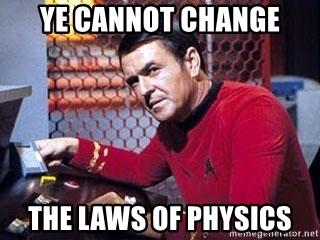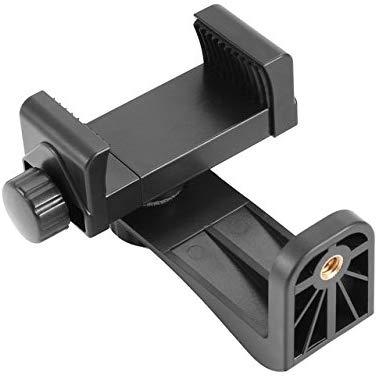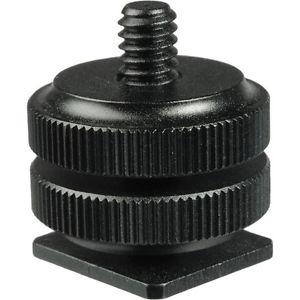Leaderboard
Popular Content
Showing content with the highest reputation on 02/05/2019 in all areas
-
Shooting with the Panasonic S1 in Barcelona
mirekti and 2 others reacted to Video Hummus for a topic
I own a GH5S. It's brilliant. Low light is not a problem. DoF is really not a problem. I can shoot in C4K at 60p with a 1.8x crop factor. I have the creative freedom to shoot at 180 FPS for a particular shot. I can put a speedbooster on it and slap a Canon EF lens on it and have a 1.15x crop factor (a 70-200mm F2.8 will be a 80.5-230 F3.2 DoF)! I have a great lens selection, because I can adapt almost ANY LENS onto my camera! I have great built in preamps. I have a great native XLR hotshoe adapter for my camera. I have VERY useable autofocus for vlog style shots or something that doesn't need precision AF. I can slap on a 100-400mm f2.8-4 MFT (full frame eq.) telephoto lens that can fit in my f*king pocket and cost 80% the price and 40% the weight. Micro 4/3 is a great system. I think it's best strengths are in video, especially. I think thats why Olympus is a hard sell anymore. Look at the Kinefinity Terra 4K. It's got basically the same sensor as the GH5s / BMPC4K and can do up to 4K 100fps and 2K up to 240fps. The video is gorgeous. The mount options are extremely flexible. And it's under $10K. People that say M4/3 isn't good don't know what they're talking about or are so biased they can't admit there are things out there that rival whatever they like. It can do lowlight (and as sensors improve this won't be an argument anymore) It can do extreme telephoto inexpensively and without much bulk It has DoF advantages for telephoto shots It can be adapted to do shallow DoF if you need it It allows more creative frame rates in a smaller package (smaller sensor, less heat, etc...) It can do built in IBIS better than larger sensors (smaller sensor, less inertia, better IBIS...look at the Oly E1X for example...it's basically a built in gimbal) It can still take great photos It can take 50MP to 80MP photos of landscapes with Pixel shift tech. It can't do anything larger than 8K. It can't replicate exactly the "full frame look". It can't boost your ego if all you care about is sensor size. Yes, I'm a M4/3 fanboy because the GH5S is a great video camera. The mount is very flexible. The tech in the latest rounds of M4/3 cameras makes it even more flexible. But in general the entire M4/3 system has an image problem because people just can't seem to get over that tiny looking sensor. At the same time I can see the benefits of full frame cameras and I see advantages in owning both systems. I really wanted Panasonic to knock it out of the park with the S line. I hope they can improve upon the initial launch specs, because it looks like a great camera.3 points -
Shooting with the Panasonic S1 in Barcelona
AlexTrinder96 and 2 others reacted to Kisaha for a topic
Not true! At least in body weight/size and price. GH5/GH5s/new Olympus are bigger, heavier, as expensive - as even some dSLRs are, and definitely a lot bigger and heavier than Z/A/a/NX cameras. Go check the numbers and you will see the truth. Cost, also. Even in the lower of the low there are full frame options now. What that indicates is, that we haven't (not even close) fight the thermal monster yet. That applies to every digital appliance, especially to the ones that have to perform at the top of our digital performance capabilities, like cameras, editing laptops, military and industrial applications, e.t.c3 points -

Blackmagic Pocket Cinema Camera 4K
Belle and 2 others reacted to CaptainHook for a topic
It was a correction to the original chart.3 points -
Blackmagic Pocket Cinema Camera 4K
shooter and 2 others reacted to AlexTrinder96 for a topic
New Pocket 4k Update https://www.blackmagicdesign.com/support/readme/878cd30c9aea48b1924f99c741e9af09 Added support for pixel remapping in camera. Added 2:1 monitoring frame guide. Improved media formatting user interface. Improved audio monitoring latency performance. Improved auto focus performance. Improved signal to noise ratio performance of camera internal microphone. Improved power efficiency for improved battery life. Improved 3.5mm audio input selection interface. Improved AV sync performance. Fixed an issue where time and date is not updated on camera when connected to the Blackmagic Camera Setup utility. Fixed an issue where the 3.5mm audio input level is 6dB lower than expected. Fixed an auto focusing issue with Lumix 20mm f/1.7 lens. Fixed an issue where some USB-C external SSDs were not detected when connected before camera is powered up. Fixed an issue where some batteries might shut off earlier than expected. Fixed an issue where low battery indicator is not displayed appropriately. Fixed an issue with camera not being detected by host computer when connected to certain USB ports. Updated dynamic range and ISO chart in user manual.3 points -
I understand2 points
-
Blackmagic Pocket Cinema Camera 4K
TurboRat and one other reacted to photographer-at-large for a topic
Was the rendering/saturation of red color addressed?2 points -
When you update, it restores the camera to factory settings, even removing my saved profiles - so only update if you have the time to reload your LUTs, reset custom buttons and put all your settings back to how you like it.2 points
-
The Resolve / Colour Grading resource thread
thephoenix and one other reacted to Towd for a topic
I think there are possible pitfalls to both options that can be solved, but it depends on how you prefer approaching it. By shooting on a white background and then expanding it in post, you'll have the benefit of not having to pull a key on your subject. The trick will be to match your extended background to the foreground element you shot. I'd personally do this with a soft "garbage mask". You'll want to frame your foreground subject with enough room so that they obviously don't get cut off by your framing, but you'll also want to leave yourself some room around them for this soft matte. This will fix any crease between the foreground and background you mentioned above. You should be able to do this in just about any editing package and it doesn't require Fusion. I've done soft masks in Premiere and Resolve successfully. Just use a lot of edge feathering on the mask and place the foreground on a layer above the background. Cut the mask around your subject and use at least a few hundred pixels of feathering-- maybe more depending on the resolution. The tricky part depending on your comfort level with grading will be to bring your background element into a similar range to your foreground so that the transition is nearly invisible. How close your foreground and expanded background are to each other exposure-wise or visually will also be a factor. If you are just blowing things out to all white, this should be pretty simple though. You could then potentially just bring in a bit of a vignette on top after matching the foreground and background. [edit]: I should point out you'll need to have enough of your white background surrounding the subject for this soft transition area of the matte. If the white background is too tight around your actor, you wont have room for this soft mask to transition to the background smoothly. The second option of pulling a key can also yield really nice results, but it will also depend a lot on the camera you use, the quality of your greenscreen and how uniformly lit it is, and possibly your comfort pulling keys. However with this solution you can just drop in your new background and call it done. No real matching between foreground and background exposure. The only downside, is that this solution will always have a some subtle edge degradation where you pulled the key. But it can be practically invisible. In both cases just be sure you give yourself enough framing on your subject for the final composition, so you don't suddenly realize you don't have legs on your actor when you pull the camera out in the comp. ?2 points -
i got around to ringing lemac in melbourne here in australia 2 days ago i was told they haven't received any cameras since xmas they received cameras before xmas but nothing since. they have 30 odd pre orders, im somewhere in there. so still the waiting game i pre ordered in october2 points
-
Canon EOS RP specs leaked, features 26MP sensor and 4K video
Snowbro and one other reacted to Video Hummus for a topic
Nice. No mention if he was filming in 4K or 1080p. 4K is much worse. Have a vlogger use it (it’s got a flip screen right perfectly made for it) have them film in 4K. Whoops it’s got a 1.7x crop that even at 16-35mm will feel close. Have them walk around filming in 4K and you will feel like you are on acid in some whackey fun house mirror room every time they swing the camera to show you something. Take a nice ride on a train, a car, or a bus if you prefer. Film out the window in 4K. Doesn’t matter? Filming some birds in 4K. You track them as you pan with their flight. Enjoy the jello telephone polls, lamp posts, and trees. It matters.2 points -
Canon EOS RP specs leaked, features 26MP sensor and 4K video
Kisaha and one other reacted to ade towell for a topic
I had a play with a friends EOS-r and the RS is bad in 4k, and I could see it just from normal handheld no need for whip pans as you keep on saying - reminded me of the a6300 I used to have, am sensitive to RS and I'm not alone. No need to defend what is an obvious drawback with the EOS-r. I find that hard to stomach on a £2300 camera - if this new cheaper camera is $1300 with clog and less of a crop then I may be willing to put up with the issue2 points -

Canon EOS RP specs leaked, features 26MP sensor and 4K video
ade towell reacted to Django for a topic
It isn't really that simple. Canon uses two types of lens motors STM & USM. On legacy EF glass, STM will give smoother & more silent AF results for video. With RF USM they use a new nano-USM tech that gives STM like smooth & silent video AF performance. Now from my legacy glass adapted on EOS R experience, USM EF glass is louder & a bit less responsive than on a Canon DSLR. (YMMV depending on lens). STM EF is about the same.1 point -
Warning harsh opinion ahead. Indie filmmakers need to be realist, the general audience/distribution platforms won t care about your project if it s not up to the industry standard. If you have a very good script and are surrounded with people with decent credentials, you are likely to find some money to make it happen properly. If you are complaining that the audience is crap and don t understand you, your project is the issue. It s definitely possible to create good content with very little money but it s very hard to maintain the quality all the way to the end to the production, you need talent and discipline. I recently saw Shoplifters, the movie got a lot a attention and won a lot of prices ( and yes, was well funded) but honestly that definitely the kind of movie that can be done with a super small budget. I did a fair amount of grading/ post production for indie movies, mostly shorts, you can see that the directors were more focused on shooting expensive equipement than really focusing on their script/skills. But couple of times, I also meet very talent emerging directors that, in the same shooting conditions made very high quality movies. But to really get produced properly, I think you either need to make a decent indie feature with no money, or very successful shorts and have a feature script ready. No one is going to come to you if you are no one with big dreams and no actual material. I think all those platform are really looking for new quality content, and are willing to fund all kind of projects, I think the issues is more down to the filmmakers with unoriginal obsessive zombie movies projects .1 point
-
Shooting with the Panasonic S1 in Barcelona
DBounce reacted to KnightsFan for a topic
I completely agree. However "one day" doesnt help anyone who is shooting now. So until then, many of us are stuck with smaller sensors as the best option.1 point -

Shooting with the Panasonic S1 in Barcelona
KnightsFan reacted to DBounce for a topic
1 point -
I think you are confusing focusing systems. "Contrast detect" hunts; moving past the point of focus and returning in order to establish sharp focus. DPAF does not hunt... regardless of which lens is used. I frequently use my 24-70mm F2.8, 16-35mm F4 and even my EF-S 10-18 on the EOS R... there is zero hunting. As there is also zero hunting on any other Canon bodies that I have used it on... C200 and 1DXMK2 to name a few. If the body support DPAF there is no hunting. I'm curious... have you used this camera? Now a case could be made regarding noise... not on the lenses I have previously mentioned. But if using in-camera mics, the 50mm F1.2 does make a noticeable sound when tracking focus. If recording audio externally, well it's a non-issue.1 point
-
Shooting with the Panasonic S1 in Barcelona
AlexTrinder96 reacted to Shirozina for a topic
Huh - an F2.8 lens lets in the same amount of light per sensor area on an M43 camera as it does on a medium format camera. Yes I have a speed booster for times I may want a bit less DOF or want a faster lens for low light - and I have a speedbooster for my full frame and APS-S systems too for the same reason.1 point -
I'd be glad to buy and test/play P4k from you - and so to help you to survive from unpleasant feeling of living-close-to-dead-system The more cameras are coming I'm more astonished with mistake that Panasonic made with GH5 that so miscalculatingly overshadowed future products... luckily, they put in it that ugly-wobbling IBIS for preventing really professional shooters to use it and ruin their precious pure cinema art achievements. But, then right from nowhere came mr Sage with his GHa lut and inject in stubborn GH5 vampire fresh blood...1 point
-
Indeed - the GH5 has been out for a while now and it's still as good or better than newer cameras in terms of key features like codec (400mbps 10bit 4.2.2) and IBS not to forget the low cost. I've got a P4k but it isn't a replacement for my GH5 by a long way.....1 point
-
any news on braw for pocket 4k?1 point
-

Blackmagic Pocket 4K media & power thread -- the best alternatives
thephoenix reacted to BTM_Pix for a topic
For something like those, I'd look at using an adjustable phone tripod mount like this one which can be adjusted to grip the battery (and rotated to be vertical or horizontal) and then use the male to male bolts as above. If you are only going to use the battery for the camera and want something more permanent and direct then you could use my old friend epoxy to attach the flat side of one of these to it so it can be directly mounted to any 1/4 20 point on a cage or the camera etc.1 point -
Shooting with the Panasonic S1 in Barcelona
newfoundmass reacted to Shirozina for a topic
Bodies yes - lenses no.1 point -
Shooting with the Panasonic S1 in Barcelona
KnightsFan reacted to thebrothersthre3 for a topic
It seems like AI should be able to even the playing field if done right. I mean if the AI can detect a face, contrast shouldn't matter right?1 point -

The Resolve / Colour Grading resource thread
thephoenix reacted to kye for a topic
If you have a model in front of a green screen but the screen doesn't extend out to the edges completely, then adding a mask so that those edges go through to a layer that is just plain green then you will have essentially extended your green screen in post. Then after that you can key out the green and it will extend all the way to the edges of the frame. It's fiddly but it would work. I've done a much more complicated splice of two frames before and got an excellent result.1 point -
Canon EOS RP specs leaked, features 26MP sensor and 4K video
Kisaha reacted to thebrothersthre3 for a topic
To be fair though the only camera that does good rolling shutter in 4k is like the GH5 and Pocket 4k. XT3 is pretty good but its still 20ms, which probably isn't great for the handheld look.1 point -
Blackmagic Pocket Cinema Camera 4K
shooter reacted to AlexTrinder96 for a topic
1 point -

Sony a7 III discussion
elgabogomez reacted to Trek of Joy for a topic
Shot a MOS spot in Toronto for VISIT FLORIDA with the a73 and a6300. Unfortunately I couldn't edit the piece as I've been traveling for other shoots. The pink scarf is a little hot in the YT upload for some reason. Lenses were the 16-35/4 and the Tamron 28-75, all handheld or on a monopod. All shots used the a73's brilliant AF/face detection and it only drifted out of focus once, then it smoothly locked on the talent again. We shot all day in the cold - about 15f to 25f - over the course of two days gathering over two hours of interview footage. The camera was on my monopod, slung over my shoulder the entire time we walked around. I never put it in the bag as I needed to be ready to shoot the moment someone agreed to talk to us. I changed the battery once. After walking the streets for about 6 hours and gathering over 90min of footage it was down to 9%. The second day I did everything on one battery. Love the Zed battery and the a73. Almost everything is the a73, there are a couple cutaways that were shot with the a6300. I'll post some gear porn shots of the camera with a smallrig cage and my wireless setup soon. Cheers Chris Edit: Everything was shot 4k 24p, not sure of the PP, it may have been EOSHD Pro Color.1 point -
Shooting with the Panasonic S1 in Barcelona
frontfocus reacted to ade towell for a topic
probably why the IBIS on Sony cameras is not very good1 point -

C100 Mkii - Resolution and Image Quality - How to Get the Best Out of It?
Kubrickian reacted to jpfilmz for a topic
A reference for anyone looking sharpness and clarity. C100 MKII 4K upscale filmed at 60fps exported to 24fps in davinchi resolve. EOS Standard Profile with the Canon 70-200mm f2.8 II I was quite surprised at how good the footage turned out. Very action cinematic to me. It looks even better when in slowmo.1 point -
Canon is about to release a new FF mirrorless for 1599$?
Rinad Amir reacted to Inazuma for a topic
Uses SD cards? HOLY SHIT take my money ? Look, you do you. That's fine For me it's a no1 point -
I couldn't agree more. The emphasis on expensive equipment and expensive cast and crew is stubbornly stupid. Plus writers in most jurisdictions aren't paid enough and plagiarists aren't punished enough. If VoD platforms kept a fund for 100 Feature Films under 100k, and ensured that the stories were great, they wouldn't have to think of most of the rubbish. The problem is VoD platforms have not been able to separate themselves from the over budget Hollywood rubbish they are attempting to replace. Suddenly there are so many VoD platforms that no one player is probably making enough. And until they improve their content and budget better, they don't deserve to.1 point
-

Olympus E-M1X - is it worth $3000?
Castorp reacted to webrunner5 for a topic
Hmm, Jordan did a really nice job on this review. He seems to like it. It looks like a better video camera than we have thought. I sort of wish I could afford it now.1 point -
Canon EOS RP specs leaked, features 26MP sensor and 4K video
Kubrickian reacted to mercer for a topic
To add to what @Michi just wrote... after spending some years reading this site, I think the most logical approach for many forum users here is to go and buy a cinema camera and use the right tool for the job.1 point -
20dB would be just fantastic! What bit depths are they talking? No point having 20 stops of DR and then only having 10 or 12 bits - by the time you convert back to a standard gamma curve it would be banding central. Could you post a link to your source?1 point
-

Blackmagic Pocket Cinema Camera 4K
CaptainHook reacted to Ehetyz for a topic
^^ If that iphoneographers (lol) test were limited to just log it might be worth something, but it focuses on graded footage - graded by someone who's seemingly completely incompetent in it. Also, looks like it has unmatching color balance/tint between the BMPCC4K and the older cameras. Mind you, he may have dialed the color balance to match by numbers, but the old v1 color science is notorious for having off-whack white balance (where the most usable range was about 3800 to 5000K) and a heavy brown/green tint (for the past month I've been grading a feature film shot on Ursa Mini 4,6K and a BMCC2,5K and while I can match them well, the process always starts with transforming the 2,5K into Color Science v4 and dialing down the green tint). In the log footage you can clearly see the P4K having warmer image - likely dialed to be too warm for the situation. P4K uses the fourth generation color science which has its own quirks. I'm guessing after Ursa Mini and its proneness to magenta they pulled back towards green and slightly browner, less red yellow tones, since those are the colors I tend to have to tweak when matching UM and P4K. This leads me to believe that in the test they had the tint pushed towards magenta on the P4K or had a magenta cast coming from the LED light - because of the all the aberrations the P4K has, magenta cast isn't one I've encountered. I don't really even want to go all zealot on the P4K but the rose-tinted glasses towards the old BMD cameras feel extremely silly from the POV of someone who has used them for years and dealt with the headaches and color issues they had. Sure, like with lo-fi 8mm or 16mm film, you can have an opinion that it has more character than something more hi-fi. But they're certainly not superior and the V4 color science (even the in-camera V3 in URSA Mini 4,6K) are lightyears more malleable and pleasant to use.1 point -
hey guys, here is a behind-the-scenes type music video I made earlier last year for my friend's band. I decided to shoot it with a mix of a Hi8 cassette camcorder and the Sony A7III with a mixture of profile settings Lenses Sony 50mm f1.8, Sigma 17-35mm f2.8-4, Tamron 28-75mm f2.8 I hoped to do more with this band but they're quite on-off with different band members coming and going1 point







